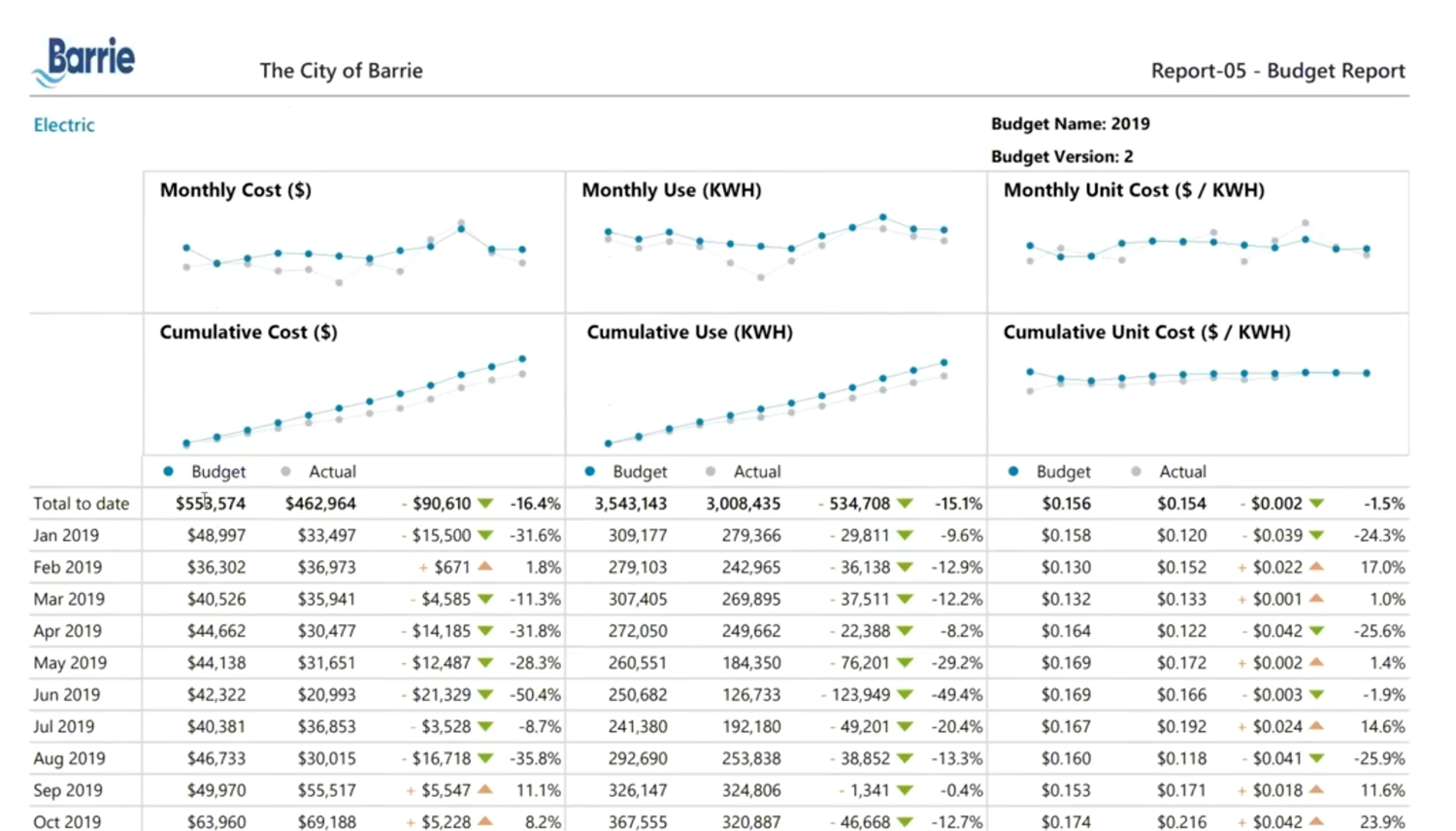EnergyCAP users frequently share, “Tasks that once took me hours or days can now be completed in seconds.” In many cases, the time-savings claims are tied to utility bill data entry and reporting. Those claims were reinforced in a recent presentation by Adam McMullin, Energy Manager for the City of Barrie, Ontario.
The City of Barrie implemented EnergyCAP in 2016 and has since documented nearly $7 million in avoided energy costs. And that’s in addition to the time, and therefore cost, savings that Adam has realized as a result of EnergyCAP-provided process efficiencies.
Utility Bill Import
Manually entering more than 400 monthly utility bills would consume hours of Adam’s time each month. Implementing EnergyCAP has enabled him to enter his bills in just a few minutes, freeing him up to focus or more higher value tasks.
Adam is able to obtain electronic invoices from many of the city’s utility vendors, and the invoices are typically imported into EnergyCAP in just a few seconds. Invoices that are not available electronically are scanned, saved as PDF files, and uploaded to EnergyCAP’s Bill CAPture service. The Bill CAPture process uses OCR technology to “read” the details of each bill and import the data directly into the city’s EnergyCAP database.
Upon import, each bill is audited on the fly by EnergyCAP, and bills with potential issues are flagged for further investigation.
Identify the Outliers
EnergyCAP’s Report-13 is a powerful analytical report that uses a rolling quadratic regression of use and cost vs. mean daily temperature. The report—which is generated and emailed automatically per a user-established schedule—spots bills that are “outliers,” that is, bills that have excessive standard deviations from the predicted values. The weather-adjusted outlier approach is far superior to old-school “flag if 25% higher than last year” audit methods, because it greatly reduces false positives and lets users focus on a short list of cost-saving candidates.
Adam cited in his presentation an example of how EnergyCAP helped him detect a running toilet in an unoccupied building that was wasting 40–50 cubic meters (about 13,000 U.S. gallons) of water per month. Undetected, the issue could have cost the city more than $150 per month.
Budgeting
Having a centralized energy database allows Adam to create detailed energy budgets based on prior year consumption. After the budget has been established in EnergyCAP, he can easily generate reports that compare actual and budgeted consumption and costs. Adam stated, “These reports take no time to run. Literally, I would spend hours trying to do this before.” Not only do the budget reports enable Adam to evaluate each facility’s energy efficiency, but also they show how much (if any) of the cost savings are due to rate reductions versus lower consumption.
“[The budget reports are] a huge touchpoint and a great tool to engage operators,” Adam noted, “because now they have an understanding of what they are controlling and what that impact has.”

We congratulate Adam and the City of Barrie for their energy conservation success and are grateful to play a role. For more details about the City’s accomplishments, click the link below to download their informative infographic. And please contact us if you’d like to learn more about your organization can benefit from EnergyCAP.
 Best-in-class portfolio-level energy and utility bill data management and reporting.
Best-in-class portfolio-level energy and utility bill data management and reporting.
 Real-time energy and sustainability analytics for high-performance, net-zero buildings.
Real-time energy and sustainability analytics for high-performance, net-zero buildings.
 A holistic view of financial-grade scope 1, 2, and 3 carbon emissions data across your entire business.
A holistic view of financial-grade scope 1, 2, and 3 carbon emissions data across your entire business.
 Energy and sustainability benchmarking compliance software designed for utilities.
Energy and sustainability benchmarking compliance software designed for utilities.



